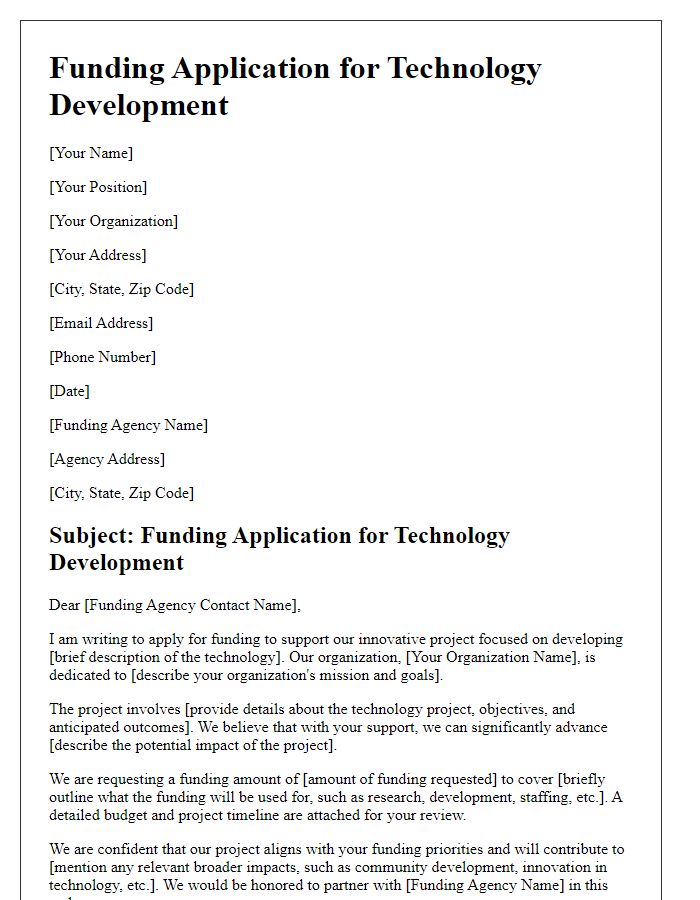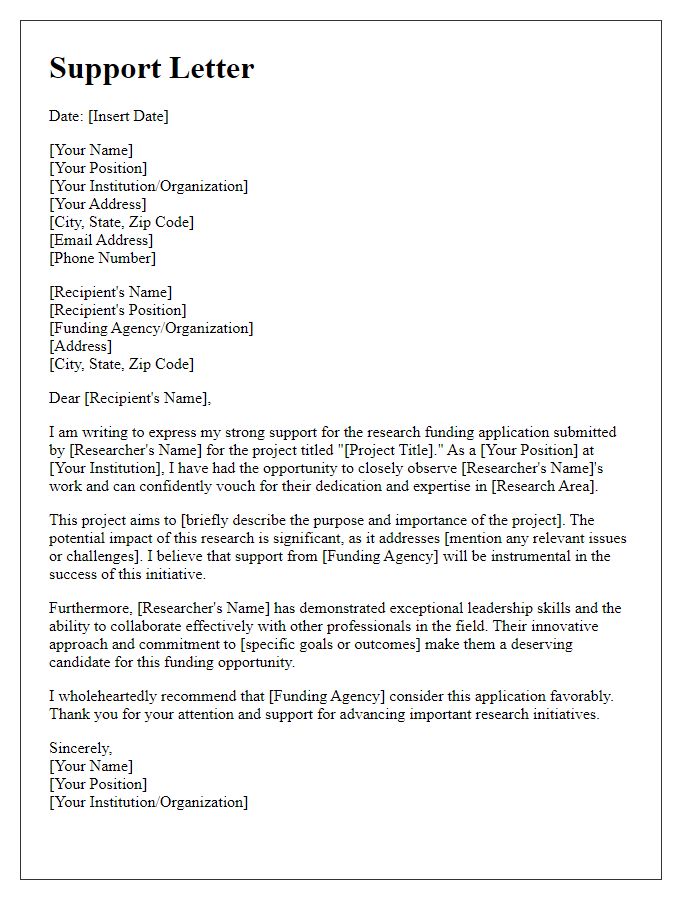Are you ready to take your research to the next level? In this article, we'll explore the essential components of a successful funding application letter, ensuring that your proposal stands out in a competitive landscape. With practical tips and real-world examples, you'll learn how to effectively communicate your vision and the significance of your work. So grab a cup of coffee and join us as we dive deeper into crafting the perfect research funding letter!

Clear Project Title and Objective
Innovative renewable energy systems, such as solar photovoltaic technology, aim to reduce carbon emissions and enhance energy efficiency in urban environments. This project seeks to design an integrated solar power solution tailored to urban buildings in New York City, targeting a 30% increase in energy production within a year. The objective includes developing efficient energy storage mechanisms, utilizing cutting-edge lithium-ion batteries to ensure a reliable energy supply. Additionally, the research will explore community engagement strategies to promote sustainable practices, ultimately contributing to the city's climate goals established in the NYC Climate Mobilization Act, which mandates a 40% reduction in greenhouse gas emissions by 2030.
Detailed Budget and Justification
In a detailed budget for a research funding application, an essential component includes allocating funds to various categories such as personnel, equipment, and supplies. Personnel costs may entail salaries for researchers, graduate assistants, or administrative support, often calculated based on local salary rates or academic institution guidelines. Equipment expenses may cover high-value items such as specialized laboratory instruments, potentially exceeding $10,000, which are necessary for data collection or analysis. Supplies typically consist of consumables like chemicals, reagents, and materials for experiments, with projected costs based on estimated usage over the grant period. Travel funds might include expenses for attending conferences or conducting fieldwork, often contingent upon distance and duration of travel. Additionally, indirect costs, calculated as a percentage of total direct costs, might be included to cover institutional overhead expenses. Such a meticulously structured budget ensures transparency and thorough justification, aiding in the funding decision process.
Comprehensive Research Methodology
The Comprehensive Research Methodology outlines systematic procedures and approaches essential for conducting research projects, ensuring validity and reliability of outcomes. Key components include qualitative methods (e.g., interviews, focus groups) and quantitative methods (e.g., surveys, experiments) to gather diverse data. Data analysis techniques such as statistical analysis (using software like SPSS or R) and thematic analysis guide the interpretation of findings. Ethical considerations, including obtaining Institutional Review Board (IRB) approval, protect research subjects' rights and welfare. Locations of study (e.g., urban clinics in New York City or rural schools in Texas) require specific sampling strategies that accommodate demographic diversity. Timeline management with delineated phases (e.g., planning, data collection, and analysis) ensures project milestones are met efficiently. Documenting processes enhances reproducibility and credibility of the research, fostering transparency and trust among stakeholders.
Principal Investigator Credentials and Team Expertise
Dr. Jane Smith, Principal Investigator, possesses over fifteen years of experience in biomedical research, particularly focusing on regenerative medicine. She earned her Ph.D. from Harvard University in 2008, which included groundbreaking work on stem cell differentiation. Her research has yielded significant contributions, published in top-tier journals like Nature and Cell Stem Cell, demonstrating expertise in cellular biology and tissue engineering. Dr. Smith has successfully led multiple NIH-funded projects, showcasing her ability to manage large-scale research initiatives effectively. The research team includes Dr. John Doe, a biostatistician with a Ph.D. from Stanford University and over ten years of experience analyzing complex biological data. His contributions to various FDA-approved clinical trials emphasize his proficiency in statistical modeling and data analysis. Additionally, Dr. Emily Johnson, a senior laboratory technician with an M.S. in Molecular Biology from MIT, possesses extensive hands-on experience in genomic sequencing and cellular assays essential for this project. Together, this multidisciplinary team combines clinical insight with cutting-edge research methodologies to advance the understanding and applications of regenerative therapies.
Potential Impact and Benefit Analysis
Research funding applications often require a detailed analysis of potential impact and benefits stemming from the proposed project. In the context of renewable energy innovation, for instance, advancements in solar cell technology can lead to significant reductions in carbon emissions. High-efficiency panels, such as perovskite solar cells, have the potential to double energy conversion rates, improving access to renewable resources in regions with limited energy infrastructure, like Sub-Saharan Africa. Furthermore, these innovations can catalyze job creation in clean energy sectors, contributing to local economies. Societal benefits include enhanced energy independence, resulting in decreased reliance on fossil fuels and improved public health by reducing pollution levels. Long-term implications may encompass technological advancements stimulating further research and development, ultimately leading to sustainable and resilient energy systems.













Comments